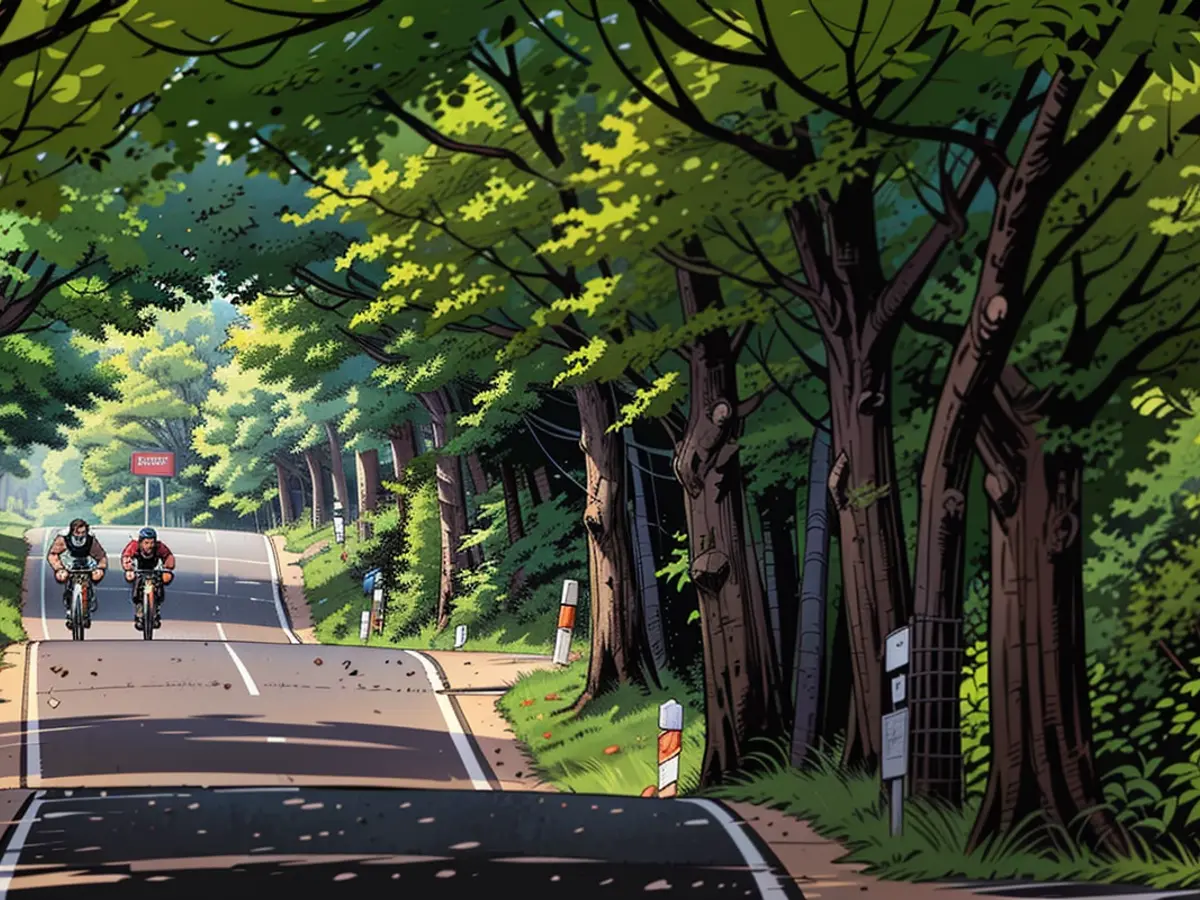Germany's pathways spark apprehension
Roadside tree rows, integrating both cultural heritage and natural habitats, are frequently over a century old and under threat. The "Day of the Avenue" aims to stimulate their protection.
Avenues serve as significant natural landmarks and contribute to the visual appeal of many streets, particularly in northern and eastern Germany. However, these sometimes historical tree lines are facing extinction, as experts warn in anticipation of the "Day of the Avenue" on October 20th. The main concerns include aging, increased hurdles for replanting, and climate pressures.
"Germany's avenues have a poor age structure," explains Jürgen Peters, a professor at the University of Sustainable Development in Eberswalde. Most avenues were planted over a hundred years ago or even earlier. The traffic safety requirements now necessitate significant pruning of tree crowns, leaving wounds that can attract fungi and other pests.
"We should urgently plant many more trees to preserve the avenue stock," Peters advises. However, there is now a guideline for federal and state roads that newly planted trees must be 4.50 meters away from the roadway. This would often necessitate planting them on private farmland, which farmers are not typically willing to relinquish. In the 1990s, road construction authorities would sometimes purchase land; however, this is no longer feasible due to increased prices, according to the expert.
Peters encourages the federal states to develop concrete strategies for preserving and improving avenues. He cites Brandenburg and Mecklenburg-Vorpommern as positive examples, boasting the densest avenue stocks. Lower Saxony and North Rhine-Westphalia also retain a substantial number of avenues. "The further south you go, the sparser it becomes," he notes.
"One does not always need to adhere to the original location if it no longer serves a purpose," argues Peters. He sees significant potential in municipal streets, which, according to a study, are predominantly devoid of trees.
Cornelia Behm of the Avenue Protection Society also highlights an increasing decline in avenue landscapes. "Many trees are now quite old, and their stability is no longer guaranteed," she notes. The states face challenges in replanting, she observes, as well as the larger distances from the road edge that the guideline necessitates. This guideline adversely affects the distinctive "tunnel character" during driving through the doubled row of trees, says Behm.
She advocates for a uniform federal protection of avenues, as there is no uniform cadastre for recording and no uniform monitoring system for condition. "So each state does as it pleases or can."
Avenues serve as habitat for various wildlife
Avenues offer shelter and habitat to numerous small animal and insect species, aid bat orientation, connect biotopes, contribute to air purification, and are valuable sources of food for bees, according to Behm. In addition, avenues provide a captivating landscape experience, as they change in appearance and beauty throughout the seasons.
Does an avenue always need to consist of a single tree species? Behm and Peters advocate for flexibility. A lime avenue, for example, could encompass summer limes, winter limes, and silver limes, providing insect food over an extended period due to their various flowering times.
"On one hand, you have a uniform look if you have just one tree species," says Peters. However, it's also feasible to alternate tree species every 300 or 400 meters, such as at intersections. This could help prevent the spread of pests. "And thinking about mixed avenues in this way, I find that quite sensible, especially now from a climate perspective," remarks the scientist.
Limes are the most common avenue trees in Germany
The most popular tree species for avenues in Germany are the lime tree, followed by the small-leaved lime, sycamore, and oak, as can be seen in North Hesse, where a state road through the Reinhardswald houses 413 oak trees, some up to 250 years old. "We navigate between nature conservation and road safety," explains Marco Lingemann from Hessen Mobil, emphasizing the historical cultural heritage and the challenge of preserving it. The trees undergo regular visual and tapping inspections.
While some drivers view avenues as hazardous obstacles in case of accidents, in the past, they were seen as the opposite: The rows of trees were planted to prevent wagons from sliding into the ditch at the end of the 18th century.
In Germany, limes and small-leaved limes are commonly used for avenue trees, contributing to the historical cultural heritage and providing road safety. However, the increase in vehicle size and traffic safety requirements are posing challenges to these centuries-old tree lines, as significant pruning is required.
Despite the threats, Germany's avenue landscapes are crucial habitats for various wildlife, providing shelter, food, and connectivity for small animal and insect species, bats, and bees. The "Day of the Avenue" aims to raise awareness about the importance of protecting these natural landmarks, which are under threat despite their significant contributions to the country's landscapes.






